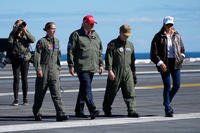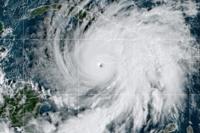The annual Foal Eagle military exercises in South Korea could be cut short to avoid coinciding with the tentative summit between U.S. President Donald Trump and North Korean leader Kim Jong-un at the end of May.
In a cryptic joint statement Monday, Defense Secretary Jim Mattis and South Korean Defense Minister Song Young-moo said the massive joint exercises, which usually begin March 1 and run for two months, would begin April 1.
The statement gave no end date for the exercises, and it is unclear whether U.S. aircraft carriers and nuclear submarines would participate as they have in previous war games.
However, South Korean media, citing military spokesmen, reported Wednesday that Foal Eagle will be limited to four weeks and conclude at the end of April.
The separate Key Resolve joint exercises, a command-and-control simulation, will also conclude before the end of April, the reports said.
"The Foal Eagle combined field training exercise will be staged for a month throughout April, while the Key Resolve command post exercise lasts two weeks from mid-April," a South Korean military spokesman said, according to the Chosun Ilbo newspaper.
On Tuesday, a Pentagon spokesman, Lt. Col. Christopher Logan, told media outlets that Foal Eagle and Key Resolve would be of the "same scale, scope and duration as previous years."
Foal Eagle has been held annually for decades. In the 1990s and early 2000s, the exercises would sometimes run for a month or as short as a week but, in recent years, they have increased in scope as tensions rose on the peninsula. Foal Eagle now usually starts on March 1 and continues to April 30.
Last year, 3,600 U.S. troops were deployed to South Korea to join troops based there for Foal Eagle 2017, which ran from March 1 through April 30. A total of 11,500 U.S. troops participated with more than 290,000 South Korean forces in the joint exercises, according to the Pentagon.
In January, Mattis and Song agreed that Foal Eagle would be postponed from its usual start date of March 1 so as not to coincide with the Winter Olympics and Paralympics, in which North Korean teams participated.
South Korean President Moon Jae-in seized on the diplomatic opening the Olympics presented to send emissaries to Pyongyang to meet with Kim, resulting in the stunning announcement earlier this month that Trump had agreed to a summit in what would be the first meeting by a sitting U.S. president with a North Korean leader.
Chung Eui-yong, South Korea's national security adviser who led the talks with Kim in Pyongyang, said at the White House on March 8 that Kim "understands that the routine joint military exercises between the Republic of Korea and the United States must continue."
Chung also said that Kim had agreed to halt nuclear and missile tests leading up to the talks with Trump.
The White House said the talks will focus on the "denuclearization" of the peninsula.
-- Richard Sisk can be reached at Richard.Sisk@Military.com.































